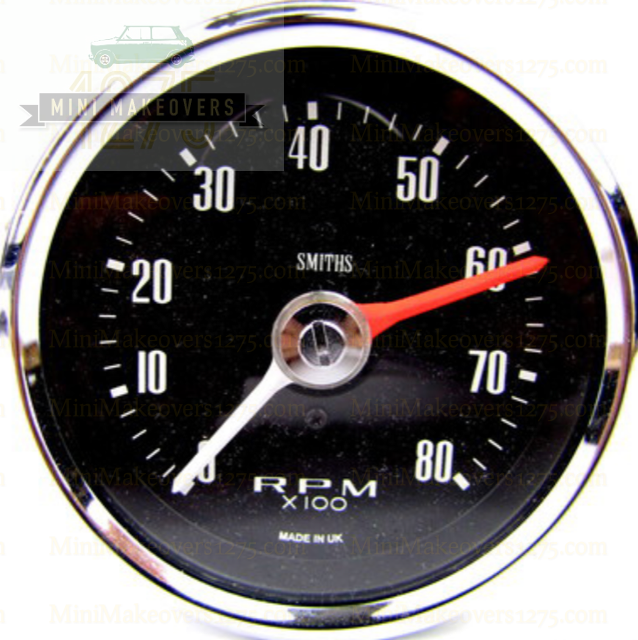Tachometer Buying Overview: Attributes to Seek and Ideal Brand names
Tachometer Buying Overview: Attributes to Seek and Ideal Brand names
Blog Article
The Significance of a Tachometer in Monitoring Engine Rate and Efficiency in Automotive Applications
In the world of auto design, the tachometer stands as an essential instrument in the chauffeur's toolbox, offering a direct window right into the inner operations of an automobile's engine. Past its feature as a simple scale of transformations per minute (RPM), the tachometer acts as an important tool for enthusiasts and professionals alike, providing real-time understandings into engine efficiency and health. Comprehending the significance of this gadget exceeds surface-level monitorings, delving right into the complex relationship between engine speed, power output, and general driving experience. As we check out the multifaceted role of the tachometer in automobile applications, a much deeper gratitude for its influence on lorry characteristics and performance begins to arise.
Importance of Monitoring Engine RPM
Monitoring engine RPM, or transformations per min, is an important facet of auto upkeep and efficiency examination. Engine RPM directly associates with the rate at which the engine's crankshaft turns, showing exactly how rapidly the engine is running - tachometer. By monitoring RPM, mechanics can assess the health of the engine, spot potential issues, and fine-tune performance. An uncommon RPM analysis might signify troubles such as engine misfires, defective ignition system, or concerns with the gas shipment system. Continually high RPM analyses might suggest aggressive driving practices or the demand for a greater equipment change to boost gas efficiency.
In addition, checking engine RPM is necessary for performance examination in racing and high-performance lorries. In summary, keeping track of engine RPM is not just essential for spotting issues but likewise for optimizing engine efficiency in different auto applications.

Benefits of Real-Time Information
In automobile applications, real-time information plays a crucial role in supplying immediate understandings right into the performance and problem of the vehicle. By constantly monitoring various parameters such as engine speed, temperature level, fuel consumption, and much more, real-time data provides countless benefits that add to improved effectiveness and safety and security when driving.
In addition, real-time data facilitates efficiency optimization by providing prompt responses on driving behaviors and engine efficiency. Drivers can readjust their actions in real-time based on this details to attain much better fuel economy and prolong the life-span of their lorry.

Furthermore, real-time information plays an important duty in modern-day auto diagnostics, allowing technicians to swiftly identify and deal with breakdowns. This leads to reduced downtime, lower visit our website upkeep expenses, and ultimately, improved total automobile dependability and durability (tachometer). By harnessing the power of real-time information, automobile stakeholders can make informed choices that positively influence both the performance and durability of the car
Influence On Gear Shifts
Effective equipment changes in auto applications substantially influence general efficiency and driving experience. The tachometer plays an important function in maximizing gear changes by offering real-time engine speed data to the chauffeur. When approaching the redline on the tachometer, it signals the motorist to upshift to avoid over-revving the engine and causing possible damage. On the various other hand, downshifting at the ideal moment can help keep the engine in its power band, guaranteeing receptive acceleration when needed.
In addition, the tachometer help in achieving smoother equipment changes, especially in manual transmissions. By checking engine speed, motorists can carry out gear shifts at the optimum RPM array, minimizing snagging movements and lessening endure the transmission components. This precision on duty changes not just improves driving convenience however additionally contributes to sustain effectiveness.
Enhancing Fuel Efficiency
Offered the essential function the tachometer plays in optimizing gear changes for efficiency and engine health and wellness, it directly adds to maximizing fuel effectiveness in auto applications. By offering real-time feedback on engine speed, the tachometer helps motorists in preserving one of the most efficient RPM range for fuel economy. When vehicle drivers constantly monitor the tachometer read and readjust their motoring habits accordingly, they can stay clear of unneeded gas usage triggered by over-revving or carrying the engine.
Additionally, the tachometer helps motorists recognize the most fuel-efficient gear to be in at any type of provided moment, protecting against the engine from working harder than necessary. In verdict, the tachometer offers as a useful tool in enhancing fuel effectiveness by promoting optimum driving habits and identifying areas for enhancement in the lorry's performance.

Making Best Use Of Engine Durability
The tachometer's function in keeping an eye on engine speed and performance is important in making sure the long life of automotive engines. Checking the tachometer enables vehicle drivers to stay within the suggested RPM array for their vehicle, protecting against unneeded stress on the engine and expanding its life-span.

Conclusion
To conclude, the tachometer plays an important role in keeping track of engine speed and performance in auto applications. By providing real-time data on RPM, it allows for effective gear changes, boosted fuel effectiveness, and taken full advantage of engine longevity. This tool is important for maintaining ideal engine performance and making sure the total capability of an automobile.
Report this page